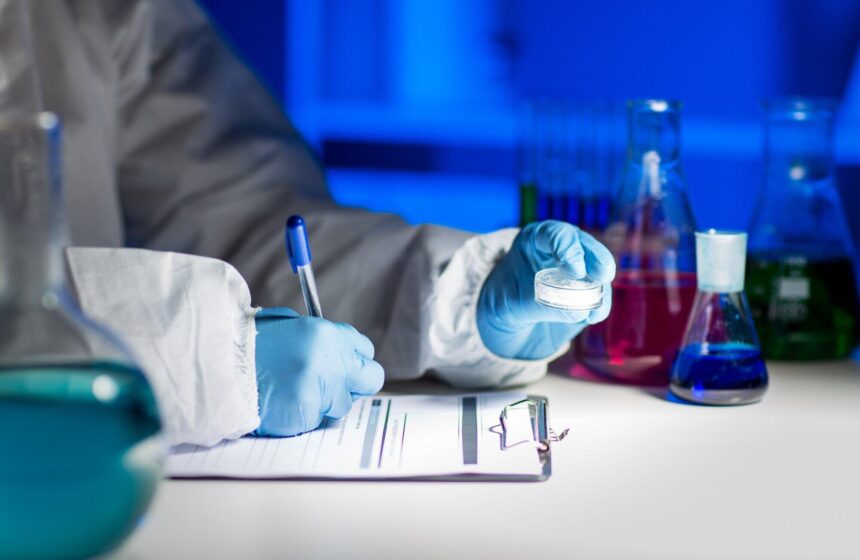What if the future of medicine could be tested before it even reaches patients? Preclinical trials are making that possible. These early studies help researchers find safe and effective treatments faster.
- Revolutionizing Drug Discovery
- Faster Paths to Cures
- AI in Preclinical Testing
- 3D Organoids Transform Research
- Human-on-a-Chip Models
- Predictive Analytics in Trials
- Reducing Animal Testing
- Personalized Medicine Starts Early
- Ethics in Preclinical Innovation
- Real-Time Data Integration
- Gene Editing in Early Trials
- Smarter Screening Techniques
- Learn More About Innovative Preclinical Trials
With new tools and smart tech, these trials are changing how we fight disease. They save time, cut risks, and open doors to better care. Today’s breakthroughs are born in labs long before hospitals.
Want to learn how these trials shape tomorrow’s healthcare? Keep reading and see how innovation starts behind the scenes.
Revolutionizing Drug Discovery
Innovative preclinical trials are transforming how we discover new drugs. These trials now use advanced tools like AI to predict drug behavior. Scientists can test drug safety and effectiveness earlier in the process. This helps reduce time and cost in drug development.
New lab models, such as 3D cell cultures, give more accurate results than traditional methods. These models better mimic how human tissues react. Virtual simulations also play a big role in testing new compounds. They allow researchers to explore more options without using animals.
Faster results mean patients can access life-saving treatments sooner. Fewer trial failures mean more drugs make it to market. Preclinical innovation is making drug discovery safer and smarter. This progress is shaping a healthier future for all.
Faster Paths to Cures
New technologies in preclinical trials are speeding up the journey from lab to clinic. Researchers can now identify promising drugs much earlier. Automation helps complete tests in less time. AI tools quickly analyze large sets of data. This helps scientists spot patterns and predict outcomes faster.
Less time spent in early testing means quicker progress to human trials. Faster trials also reduce overall development costs. Patients benefit by gaining access to new treatments sooner.
Real-time monitoring speeds up decision-making during trials. Failures can be caught earlier, saving valuable time. Shorter timelines bring hope for rare and urgent diseases. These advances bring us closer to finding cures at record speed.
AI in Preclinical Testing
Artificial intelligence is helping researchers work faster and smarter. It can study large sets of data in seconds. This helps find patterns that humans might miss. AI tools can predict how drugs will behave in the body.
This reduces the need for some lab experiments. It also lowers the chances of drug failure later on. At clinical trials at XenoSTART, AI is used to guide early testing. It helps pick the most promising drug candidates. This saves time and money in the research process.
AI also supports better safety checks before human testing begins. By improving early decisions, AI leads to better results in later trials. These tools are shaping a new future for medicine.
3D Organoids Transform Research
3D organoids are tiny versions of human organs grown in the lab. They are made from stem cells and behave like real tissues. Researchers use them to study diseases in a more natural way. These models help test drugs more safely and accurately. They react to treatments like real organs would.
This gives scientists better information before human trials begin. Organoids also reduce the need for animal testing. This makes research more humane and cost-effective. Different types of organoids can be made for the brain, liver, lungs, and more.
Each type helps study specific health problems. Drug responses can be tested on patient-derived organoids. This supports the development of personalized medicine. These advances are making healthcare more targeted and effective.
Human-on-a-Chip Models
Human-on-a-chip models are tiny devices that copy how organs work. They are built using living human cells. Each chip can represent an organ like the heart, liver, or lungs. Scientists use them to test how drugs affect the body.
These models give more accurate results than animal testing. They show how organs react to medicine in real time. This helps find side effects early in the process. Chips can be connected to study how drugs move through the body. They save time by showing fast and clear results.
Researchers can test many drug options quickly. These tools lower the cost of early drug trials. They also help develop safer treatments. This technology is changing how we prepare drugs for human use.
Predictive Analytics in Trials
Predictive analytics uses data to forecast what might happen in drug testing. It helps researchers spot risks before trials begin. This makes early drug research safer and faster. By studying past results, computers can find patterns in the data. These patterns help predict how a new drug may work.
Scientists can focus on the most promising drug candidates. This saves time and money during preclinical trials. It also lowers the chances of failure in later stages. Predictive tools can find possible side effects early.
They help improve drug safety before testing on people. These tools also guide better decisions in trial design. Smarter planning leads to better results. This approach is shaping a more reliable future for medicine.
Reducing Animal Testing
New tools in science are helping us use fewer animals in research. 3D cell models can now copy how human organs work. These models give more accurate results than animal tests. Human-on-a-chip devices also show how drugs affect the body. They use real human cells, not animals.
AI can predict how a drug will act before any testing starts. This lowers the need for live animal studies. Organoids grown in labs give better insights into human disease. They respond to drugs like real tissues.
Using these tools makes research faster and safer. It also makes testing more ethical. Many scientists now prefer these modern methods. This change is helping shape a kinder and smarter future in healthcare.
Personalized Medicine Starts Early
Preclinical trials now focus more on individual patient needs. Scientists use patient cells to test how a drug will work. This helps find the right treatment for each person. Organoids made from patient tissue show real responses to drugs.
AI tools match treatments to a person’s unique biology. These tools sort data from genes, cells, and past results. Early testing can now predict which drug will work best. This saves time and avoids harmful side effects.
Patients get better care with fewer risks. Trials can be designed for smaller, targeted groups. This leads to faster approvals for new drugs. Early personalization means more success in later stages. It brings us closer to truly custom healthcare.
Ethics in Preclinical Innovation
New methods in preclinical trials are making research more ethical. Scientists are finding ways to replace animal testing. Tools like organoids and chips use human cells instead of animals. This reduces harm and improves results.
AI helps avoid risky tests by predicting outcomes early. Better models mean fewer failed drugs in later stages. This protects future patients from unsafe treatments. Using real human cells gives results that matter more. Research becomes more honest and helpful.
Clearer data supports safer decisions. Respect for life is growing in science. Ethics and innovation now go hand in hand. This shift builds trust in the future of healthcare.
Real-Time Data Integration
Modern trials now collect and use data as it happens. This helps researchers see drug effects right away. Sensors and digital tools track every small change. AI systems process this data quickly and clearly.
Problems can be found and fixed without delay. This speeds up decision-making in early testing. It also reduces the chances of mistakes. Scientists get a full view of how a drug behaves.
Real-time updates help adjust trials as needed. Less time is wasted on weak drug candidates. Better data means better outcomes. This approach saves both time and money. It helps bring safe treatments to patients faster.
Gene Editing in Early Trials
Gene editing is helping scientists understand diseases at the root level. Tools like CRISPR can change specific parts of DNA. This allows researchers to study how genes affect drug response. In early trials, gene editing helps create better disease models. These models show how a treatment might work in real people.
Scientists can fix faulty genes before testing begins. This makes trials more accurate and useful. Gene editing also helps design targeted therapies. Treatments can now match a patient’s unique genetic makeup.
This lowers the risk of side effects. Early testing with gene editing leads to faster progress. It supports safer and smarter drug development. These advances are shaping a more precise future for medicine.
Smarter Screening Techniques
New screening tools help find the best drug candidates early. These tools use robots to test thousands of compounds quickly. AI sorts through results to spot the most promising ones. This saves time and reduces human error.
3D models and organoids show real tissue reactions. They make screening more accurate than flat cell cultures. Better screening finds harmful effects before human trials. This improves safety and cuts costs.
Only the strongest drug options move forward. Virtual screening can test drugs using computer models. This means fewer lab tests are needed. Smarter tools help build faster, safer trials. These advances are changing how we develop new treatments.
Learn More About Innovative Preclinical Trials
Preclinical trials are the first step in drug testing. They help find safe and effective treatments. New tools make this process faster and smarter.
These changes lead to better results for patients. Preclinical trials play a big role in shaping future healthcare.
Looking for more tips and ideas? We’ve got you covered. Check out some of our other posts now.















